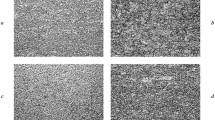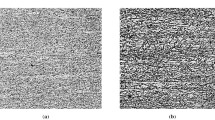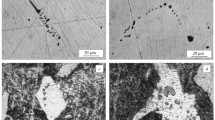Based on the analysis of the Russian-made 4 to 16 mm thick rolled products produced by thermomechanical rolling from high-strength (yield point: 433 to 828 MPa) low-alloyed welding steels obtained as a result of 15 melting runs, the effect of chemical composition and structure on the mechanical properties, such as yield point, impact toughness, and impact toughness anisotropy factor, was studied. It was shown that the yield point of manganese steel (1.62–1.80 wt. % Mn) is mainly caused by microalloying with titanium, and to a lesser degree – with niobium and vanadium. An increase in the yield point of steel in excess of 700 MPa increases its tendency to impact toughness anisotropy. Within the concentration range from 0.001 to 0.08 wt. % Ti, the value of anisotropy factor Ka , which varies from 1.45 to 1.80, does not depend on Ti content, but increases sharply to Ka = 3.19 once the Ti content increases (in excess of 0.08 wt. %). A considerable negative effect of Nb content in steel on impact toughness (KCV– 40), measured on transverse specimens, has been established. A joint negative effect of Ti + Al on KCV– 40 is somewhat less pronounced. The presence of Al in the inclusions of complex composition (Ti-Al-Cr) noticeably reduces (by 4.5 times) the negative effect of Ti on KCV– 40 of highstrength manganese steel.







Similar content being viewed by others
Notes
In steel marking, letter “S” denotes construction steel, while other letter symbols denote a manufacturer’s trademark, and three-digit numbers denote rated value of the steel yield point.
References
V. M. Goritskii, G. R. Schneiderov, and I. A. Guseva, “Effect of chemical composition and structure on mechanical properties of low-alloyed welding steels after thermomechanical rolling,” Metallurg, 5, 49–55 (2016).
V. M. Goritskii, M. A. Lushkin, O. V. Goritskii, and G. R. Schneiderov, “Effect of structural factors on the impact toughness anisotropy of sheet metal made of ferrite-pearlite steels,” Deformat. i Razrush. Mater., 8, 16–21 (2014).
V. M. Goritskii, Thermal Embrittlement of Steels [in Russian], Metallurgizdat, Moscow (2007).
V. I. Ilyinskii, S. V. Golovin, P. R. Stepanov, et al., “Development of production technologies using rolling mill 5000 for pipeline designs with extreme parameters,” Metallurg, 8, 57–68 (2017).
Author information
Authors and Affiliations
Corresponding author
Additional information
Translated from Metallurg, Vol. 63, No. 1, pp. 24–30, January, 2019. Original article submitted October, 12, 2018.
Rights and permissions
About this article
Cite this article
Goritskii, V.M., Shneiderov, G.R. & Guseva, I.A. Effect of Chemical Composition and Structure on Mechanical Properties of High-Strength Welding Steels. Metallurgist 63, 21–32 (2019). https://doi.org/10.1007/s11015-019-00790-2
Received:
Published:
Issue Date:
DOI: https://doi.org/10.1007/s11015-019-00790-2




